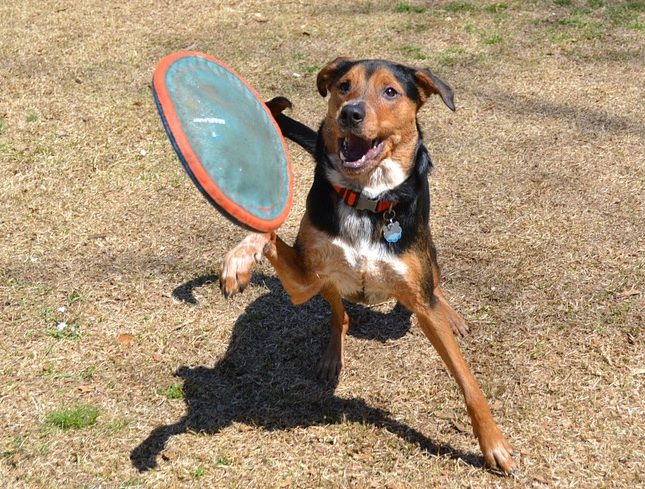For the Love of the Game
Teaching Your Dog to Play Fetch
 We know what you’re thinking: Teach your dog to play fetch? Don’t they naturally love chasing and retrieving balls or frisbees? Actually, no, they don’t!
We know what you’re thinking: Teach your dog to play fetch? Don’t they naturally love chasing and retrieving balls or frisbees? Actually, no, they don’t!
Even though some dogs instinctively love to play fetch, others need a little help discovering the joys of the game. Whether you have a dog with no interest in fetch, or one who loves chasing the ball but never brings it back, there are several reasons to encourage this type of play.
The Benefits of Fetch
A game of fetch is good for a dog’s physical and mental health.
Unlike taking a walk around the block, fetch usually involves intense bursts of energy, thanks to sprinting. Not only does this burn off excess energy, but it helps with healthy weight management. Plus, brisk activity releases neurotransmitters in a dog’s brain, stimulating the reward centers and making them feel good — think of it as the doggy equivalent to a runner’s high.
Fetch also helps tap into your dog’s deepest animal instincts; mainly, chasing prey and bringing it back to their families. As a result, you can think of this as a great way to bond, and it can even address many behavioral problems because dogs get to use their natural instincts in a safe and healthy way.
Fetch Basics
Some dogs were selectively bred for their ability to hunt and retrieve things for humans. Dogs who are really good at this, like Labrador retrievers, often pass the skill down to their puppies. But don’t despair if your dog doesn’t seem to have any interest and doesn’t want to play with toys; you can often still teach them to fetch!
To begin, have a toy that your dog will enjoy putting in their mouth — plush, rope, balls, etc. — and a bunch of yummy treats nearby. Then follow these simple steps!
1. Associate the Toy with a Reward
Start by putting a toy on the ground and marking any interaction your dog makes, either with a clicker or specific word like “Yes!” Then give your dog a treat. Continue the step until your dog consistently looks at the toy while expecting a reward. You can usually tell when it’s time to move on if they start nosing or pawing the toy to get their treat. If you see this, mark the behavior and give them a treat.
2. Make It Harder
Pick up the toy and put it near your dog’s face. When they sniff it, mark the behavior and give them a treat. Continue holding the toy during this step and waiting for your dog to touch it, marking and rewarding the behavior each time. You can usually tell when your dog is ready to progress when they start to get frustrated and want to mouth the toy. Like before, mark this behavior and immediately reward them.
3. Teaching Retrieve
Now that your dog sees that their toy gets them treats, it’s time to help them understand they should give it to you for a reward.
First, put the toy on the ground in front of you again. Then, encourage your dog to pick it up. When they do, put your hand underneath it. As soon as your dog puts the toy in your hand, mark and reward the action. This should help them learn that when they give you the toy, they get a treat. Continue this step until they consistently put the toy in your hand.
4. Add Distance
When your dog is reliably putting the toy in your hand, start adding more distance! Set the toy on the ground and take one or two steps back, encouraging them to bring it towards you. Remember, act excited to make it fun and instantly mark and reward them as soon as they comply.
You can continue increasing the distance between you and your dog until they are enthusiastically chasing anything you throw and eagerly bringing it back.
Does your dog love playing fetch? Tell us about it in the comments below!

